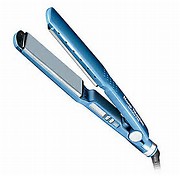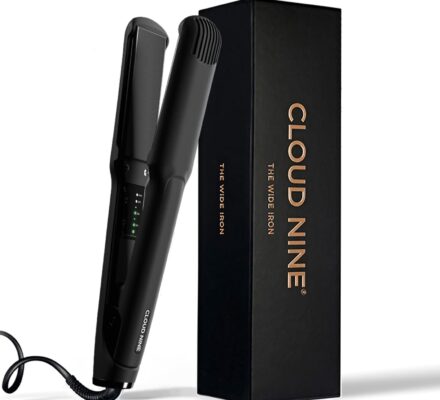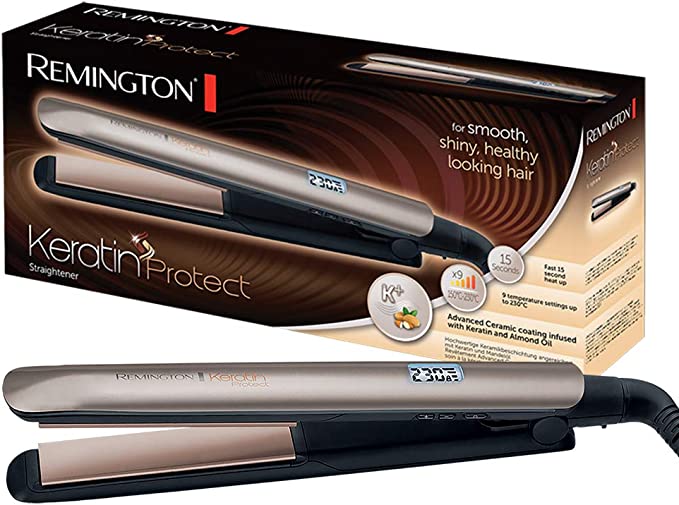If you’ve ever been in a beauty supply store, you’ve probably noticed the vast array of hair straighteners available. But with so many options, it can be overwhelming to choose the right one for your hair type. Two popular choices are thermal and ionic hair straighteners. While both have the same end goal of sleek, straight hair, they differ in terms of how they achieve it. Thermal straighteners use heat to break down the hydrogen bonds in the hair, while ionic straighteners emit negative ions to neutralize static and frizz. By understanding the differences between thermal and ionic hair straighteners, you can make an informed decision on which one is best for you.

Thermal Hair Straighteners
Thermal hair straighteners, also known as ceramic or traditional hair straighteners, use heat to help straighten the hair. These hair tools typically have ceramic plates that produce high heat when turned on. The heat source for these straighteners is electricity, as they need to be plugged into an outlet to function. The temperature of thermal hair straighteners can be adjusted to suit individual preferences and hair types. This flexibility in temperature control is one of the key features of thermal hair straighteners.
When using a thermal hair straightener, the process involves applying heat directly to the hair strands. The ceramic plates heat up and are clamped down on the sections of hair, effectively smoothing and straightening them. The higher the temperature, the faster the straightening process, but it is important to find a balance between heat and hair health to prevent damage.
One of the major advantages of thermal hair straighteners is their effectiveness in straightening even extremely curly or coarse hair. The high heat they generate can efficiently transform curly locks into sleek, straight tresses. Additionally, thermal hair straighteners tend to provide longer-lasting results compared to other types of straighteners.
However, thermal hair straighteners also have their drawbacks. The high heat used has the potential to damage hair if not used properly or if protection measures are not taken. Excessive heat can lead to dryness, breakage, and even excessive hair loss. It is crucial to use heat protection products and to avoid using thermal hair straighteners on a daily basis to minimize damage.
Ionic Hair Straighteners
Ionic hair straighteners utilize a different technology than thermal hair straighteners. These hair tools are designed to emit negative ions while straightening the hair. The negative ions are created by the built-in ionizing technology in the straightener.
Negative ions have the ability to neutralize the positive ions present in the hair, reducing frizz and static. This technology works by breaking down water molecules on the hair shaft, sealing the cuticle and locking in moisture. By doing so, ionic hair straighteners are often touted as being gentler and less damaging to the hair compared to thermal straighteners.
The process involved in using an ionic hair straightener is similar to that of thermal straighteners. The device is plugged into an outlet, and the ionic technology is activated when the straightener is turned on. The hair is then clamped between the plates and slowly passed through, with the negative ions working their magic to straighten and smooth the hair strands.
One of the major advantages of ionic hair straighteners is their ability to minimize frizz and static in the hair. This is especially beneficial for individuals with naturally frizzy or unruly hair. Ionic straighteners also have a reputation for producing shinier, sleeker results compared to thermal straighteners.
However, it is important to note that the effectiveness of ionic hair straighteners can vary depending on an individual’s hair type and its response to negative ions. While many people experience great results, others may find that the ionic technology does not have a significant impact on their hair.
Comparing Thermal and Ionic Hair Straighteners
When it comes to the effect on hair, thermal and ionic hair straighteners differ slightly. Thermal straighteners, with their high heat, can be more effective in straightening very curly or coarse hair. On the other hand, ionic straighteners are renowned for minimizing frizz and static, resulting in smoother, shinier hair. Choosing the right straightener depends on the specific needs and preferences of each person.
In terms of speed, thermal hair straighteners tend to offer faster results due to their higher heat output. This can be advantageous for those with limited time in their hair care routine. However, it is crucial to balance speed with the potential damage that excessive heat can cause.
When considering long-term use, ionic hair straighteners may be a better choice for individuals looking to prioritize hair health. The negative ions emitted by these straighteners can help seal moisture into the hair, reducing the likelihood of dryness and damage caused by excessive heat. On the other hand, thermal straighteners can lead to more damage if used improperly or too frequently.
When it comes to suitability for different hair types, both thermal and ionic straighteners can be used on various hair textures and thicknesses. However, individuals with extremely curly or coarse hair may find thermal straighteners more effective at achieving their desired results. It is always recommended to consider personal hair needs and consult with a stylist if unsure about the best option.
Choosing the Right Hair Straightener
Choosing the right hair straightener goes beyond the choice between thermal and ionic. Several factors should be considered to ensure the best match for an individual’s hair type and needs.
First and foremost, hair texture and thickness play a significant role in determining the most suitable hair straightener. Thermal straighteners, with their high heat, work well on thicker, coarser hair, while ionic straighteners can be beneficial for all hair types, including finer hair.
The condition of the hair is another important factor to consider. If the hair is already damaged or prone to dryness, it may be wise to opt for an ionic hair straightener that is designed to be gentler and minimize moisture loss. Thermal straighteners may exacerbate existing hair damage if used improperly.
Personal preference also plays a role in choosing the right hair straightener. Some individuals may prefer the sleekness and shine achieved with thermal straighteners, while others may prioritize the frizz-reducing effects of ionic straighteners. It is important to consider the desired outcome and prioritize hair health when making a decision.
Finally, budget is a practical consideration for many. Both thermal and ionic hair straighteners come in a range of price points, so it is important to establish a budget and research available options within that range. It is possible to find quality hair straighteners at various price points, so it is not always necessary to opt for the most expensive option.
Tips for Using Hair Straighteners
Regardless of the type of hair straightener chosen, there are a few tips and techniques that can optimize the straightening process and minimize damage.
First and foremost, using heat protection products is crucial. These products create a barrier between the hair and the heat, reducing the likelihood of damage. Heat protectant sprays, serums, and creams are available, and choosing one that suits individual hair needs is essential for maintaining healthy hair.
Preparation is key to achieving the desired results. Before straightening, it is important to thoroughly wash and dry the hair. Straightening damp or wet hair can lead to additional damage, so waiting until the hair is completely dry is essential. Additionally, using a wide-toothed comb or brush to detangle the hair before straightening can make the process smoother.
Sectioning the hair is a technique that can lead to better results. By dividing the hair into manageable sections, it is easier to ensure that each strand is straightened evenly. This also helps reduce the number of passes required, minimizing hair exposure to heat. Sectioning can be done using hair clips or hair ties.
The straightening technique used can also impact the final results. It is important to glide the straightener down the hair shaft smoothly and slowly, avoiding any sudden stops or tugging. Applying too much pressure can cause breakage and damage, so a gentle touch is recommended.
Conclusion
In conclusion, the difference between thermal and ionic hair straighteners lies in the technology they use and their impact on the hair. Thermal straighteners rely on high heat to straighten the hair, making them effective for curly or coarse hair but potentially more damaging. Ionic straighteners emit negative ions to neutralize frizz and static, resulting in smoother, shinier hair while potentially being gentler on the hair. Choosing the right hair straightener depends on factors such as hair texture, condition, preference, and budget. By considering these factors and following tips for usage, individuals can achieve beautifully straightened hair while minimizing damage.



